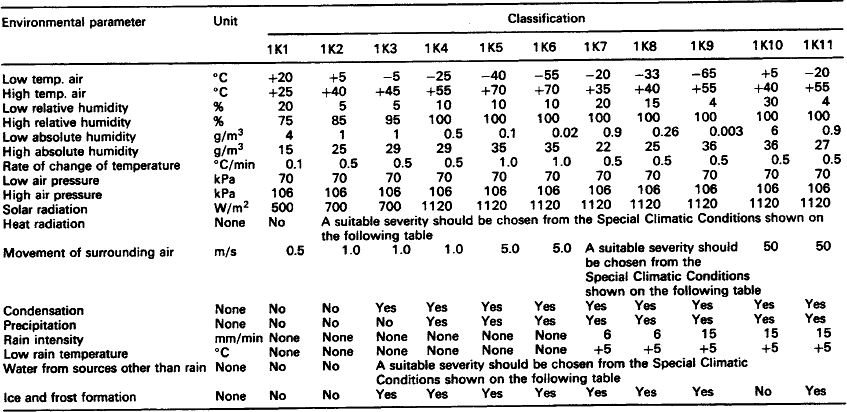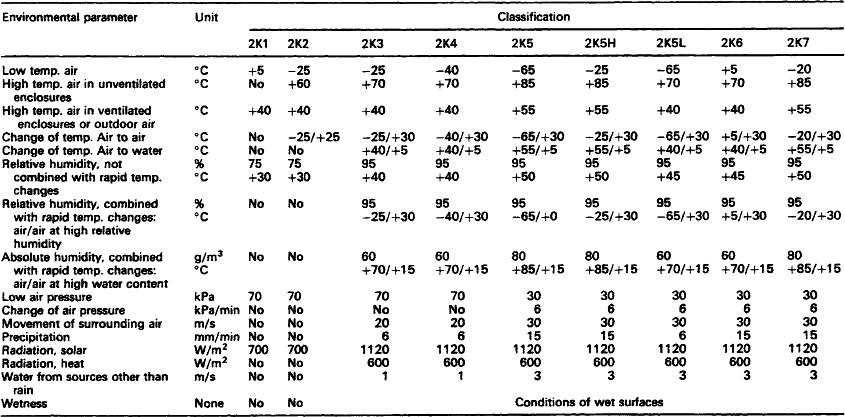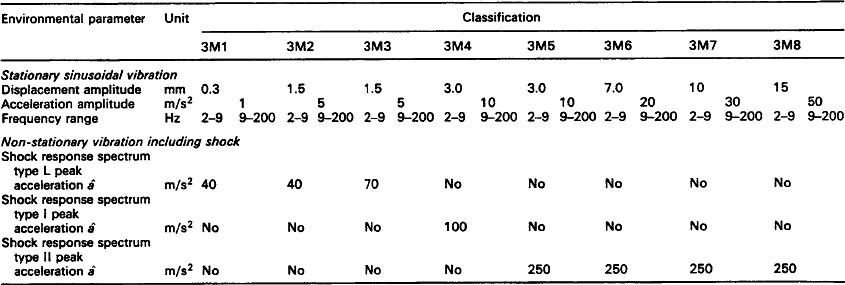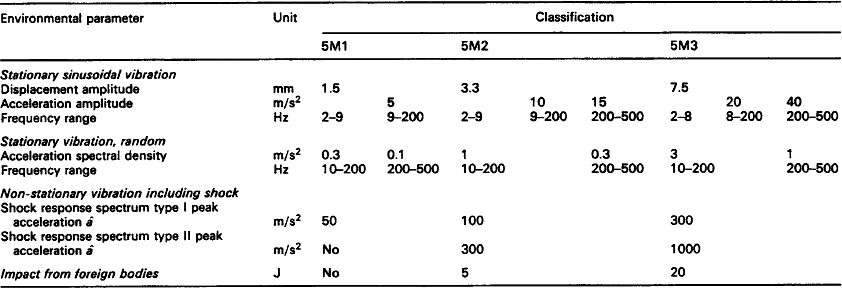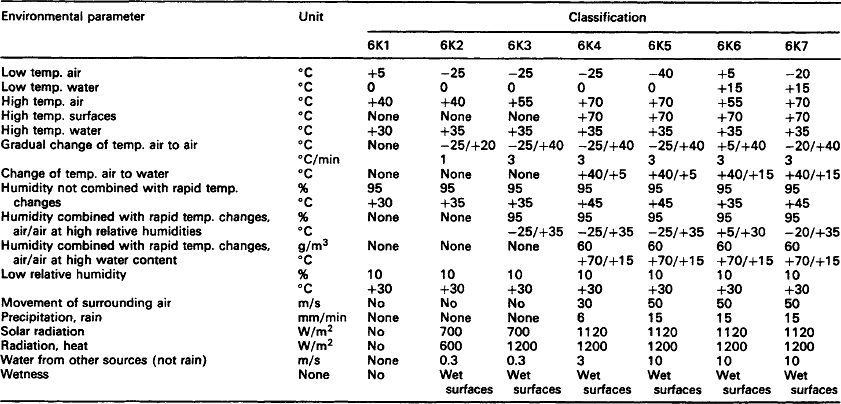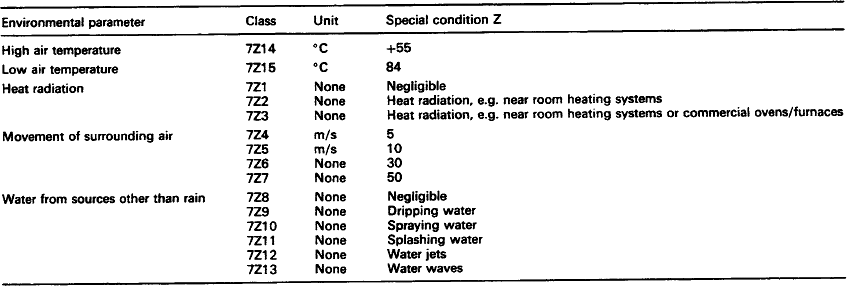Introduction
Implementation of any system on a world market cannot be achieved without allowing for local peculiarities and variations, particularly those concerning the application environment.
Although the International Standards Organisation (ISO), the International Electrotechnical Commission (IEC), the Comité Européen de Normalisation (CEN), the Comité Européen de Normalisation Electrotechnique (CENELEC) and the national bodies (e.g. British Standards Institution (BSI)) produce standards and specifications that:
• establish classes of environmental parameters and list their severity;
• list the limitations and restrictions that will be imposed on equipment by the intrinsic environmental conditions that occur at locations where equipment is likely to be installed or stored; there is no single standalone specification, standard or book that completely covers the application environment. The availability of system specific environmental specifications are also few and far between.
Several CENELEC Working Groups are in the process of producing generic standards (e.g. ENV 50121, prEN 50198 and EN 50125, etc.), which are mainly aimed at the railways application environment. But no complete ‘set’ of ISO, IEC or CEN/CENELEC agreed standards currently exists that adequately covers the environment in which electrical, mechanical, electromechanical and/or electronic equipment (hereafter referred to in this book simply as ‘electronic equipment’ or ‘equipment’) are intended to operate.
CENELEC recognised that there was a need to establish a Working Group specifically tasked with the drafting of a set of harmonised environmental conditions but admit that they will probably not be able to produce such a standard much before the end of the century. It has been confirmed, however, that any future CENELEC standard will always state the minimum, general, values and ranges which will apply to 95% of all equipment. This standard will thus only serve as a basic generic document thereby allowing specifiers to increase severities but not decrease them. Most Calls for Tender, contracts and purchases of equipment on the other hand require individual system specific specifications to define the actual product or product requirement. In all instances, these system specific specifications must never be less than the CENELEC figure but, in some cases, they may be more stringent.
This book has, therefore, been written in order to provide industry and their customers with an indication of the existing environmental specifications and requirements that they are likely to come across and which are frequently quoted in Calls for Tender. Case studies of typical requirements, values and ranges are also supplied and test specifications aimed at proving conformance are listed and described.
In writing these specifications, care has always been taken to incorporate the current requirements that are common to ISO, IEC, CEN/CENELEC, EN and national existing standards together with all available standards and specifications obtained from industry and the military services. Where no existing standard, specification or guidance is available, a considered recommendation has been made. Throughout this book, optimum use has always been made of the IEC 721 series of standards, ‘Classification of environmental conditions’.
1.1 Purpose and layout of this book
The purpose of this book is to provide guidance on the operation, storage and use of electronic equipment within an application environment. Also included are details of typical environmental requirements found in modern contracts and the test standards that are normally used to ensure compliance with these requirements.
• defines performance and interface specifications for equipment;
• establishes classes of environmental parameters and lists their severity;
• covers long- and short-term environmental conditions which may be met by equipment when being transported, operated or stored;
• lists the limitations and restrictions that will be imposed on equipment when installed or stored;
• provides details of the environmental conditions (natural as well as man-made) that equipment must be proof against;
• records the degree that equipment may be allowed to exert influence on the environment.
1.2 Structure of the document
For convenience, this book is divided into 11 sections which relate to the following environmental conditions:
For ease of reference, each environmental condition described in this book has four subsections:
1.2.1 Guidance
This is a user friendly general description of the environmental condition giving:
• an introduction to the condition, detailing what it is and the effects it can have on equipment;
• details of the considerations to be made when producing a system specific or generic environmental specification, contract, etc.;
• recommended test procedures used by manufacturers and suppliers to demonstrate that their equipment is capable of meeting the environmental requirements.
1.2.2 Typical contract requirements
This subsection provides (in the form of a case study) typical environmental requirements normally found in contracts for the production and supply of electronic equipment and which are frequently stipulated in Calls for Tender.
1.2.3 Values and ranges
Within this subsection can be found typical values and ranges of environmental requirements.
Other than the few mandatory requirements imposed by CENELEC and CEN, etc., each requirement typifies recommended maximum and minimum environmental values.
The following statements are frequently found in contracts:
• all equipment, components or other articles shall be tested in their production configuration without the use of any additional external devices, especially those that have been added expressly for the purpose of passing these tests;
• when tested, the sample (component, subassembly or equipment) shall perform as stipulated in the procuring specification and over the designated temperature range;
• when equipment is turned on, it shall be expected to operate within the temperature ranges stipulated and be fully operational within a specified period of time after initial turn on.
1.2.4 Tests
This subsection details some of the test standards which may be applied to equipment and contains:
• details of the most used environmental tests that a purchaser will normally require a manufacturer to adhere to;
Note: Full details of each of these recommended tests are contained in the relevant ISO, IEC or other standard. A complete list of these standards is supplied in the reference section of this book. Copies of all these standards may be obtained from any National Standards Organisation.
1.2.4.1 Severity
Normally the severity of the Test Specifications is restricted to the severity of the environmental conditions to which equipment is likely to be exposed. They are not intended to cover the severity of the resulting stresses on equipment. For example, the severity is intended to cover the temperatures of the surrounding media (e.g. air) and the temperatures of the structure to which the equipment is connected. They are not intended to cover the temperatures of hot points within the equipment itself or the severity of resulting stresses on equipment.
1.3 Environmental factors and influences
The actual environment to which equipment is likely to be exposed is normally complex and comprises a number of environmental conditions. When defining these conditions for a certain application it is, therefore, necessary to consider all environmental influences.
The environmental influences on equipment in a certain application may thus be considered as a result of:
• conditions from the surrounding medium;
• conditions caused by the structure in which the equipment is situated or attached;
1.3.1 Combined environmental factors
Equipment may, of course, be simultaneously exposed to a large number of environmental factors and corresponding parameters. Some of the parameters are statistically interdependent (e.g. low air velocity and low temperature; sun radiation and high temperature). Other parameters are statistically independent (e.g. vibration and temperature). The effect of a combination of environmental factors is, therefore, extremely important and has to be considered during manufacture and operation.
1.3.2 Sequences of environmental factors
Certain effects of exposing equipment to environmental conditions are a direct result of two or more factors or parameters happening either simultaneously or after each other (e.g. thermal shock caused when exposing equipment to a high temperature immediately after exposing it to a low temperature). These possibilities must always be taken into account when designing and evaluating equipment.
1.4 Environmental classes
In accordance with the recommendations of IEC 721, environmental classes are identified by:
3. Operational – Stationary use at weather protected locations
4. Operational – Stationary use at non-weather protected locations
Z Special values which can be applied to climatic conditions
C Chemically active substances
S Mechanically active substances
Third digit A minimum value taken from the appropriate tables within IEC 721 which indicates the severity of the environmental condition.
A class may be further divided as H (high) or L (low) to allow for conditions where, for example, the temperature may be extremely low but never high.
For example, 2M4 denotes the fourth severity of mechanical conditions during transportation.
A summary of the IEC 721 classifications follows. Note, however, that variations and combinations of these classifications can be found within the standard. Consequently, these tables should be considered as a guide and not as a substitute for the complete standard.
Copyright permission has been granted by courtesy of the British Standards Institute.
1.4.2 Transportation
1.4.3 Operational
1.4.3.1 Weather protected stationary equipment
Table 1.12
Operational – weather protected stationary equipment – climatic conditions

1If necessary, a special value can be selected from the Special Climatic Conditions table.
1.4.3.2 Non-weather protected stationary equipment
Table 1.21
Operational – non-weather protected stationary equipment – chemically active substances

Figures in brackets are mean values.
Figures are maximum values occurring over a 30 minute period per day.
1.4.3.3 Ground vehicle equipment
1.5 Environmental application
Although the conditions affecting equipment mainly consist of the environment (ambient and created), consideration must also be given to where the equipment will be operating from and how it will be used.
For simplicity we have (within this book) broken these details down into two basic categories:
The environmental conditions that have been identified as having an effect on the electronic equipment (Table 1.41).
Table 1.41
Basic environmental conditions
Climatic
Mechanical
Electrical
• electromagnetic environment (EMC and EMI)
• susceptibility and generation
Biological
Externally generated influences
Ergonomic aspects
Chemical
General
The main uses of electronic equipment (Table 1.42).

